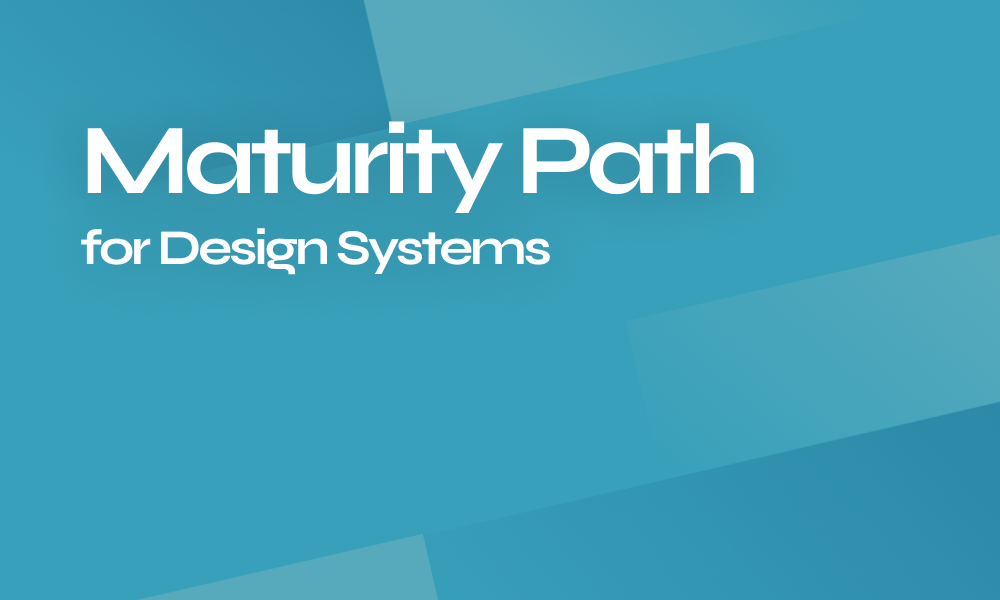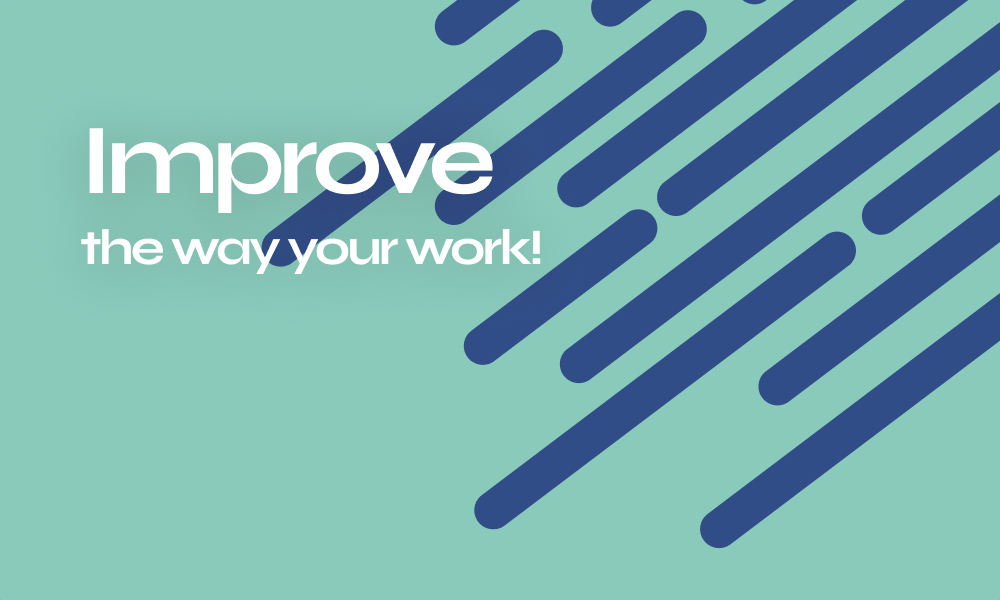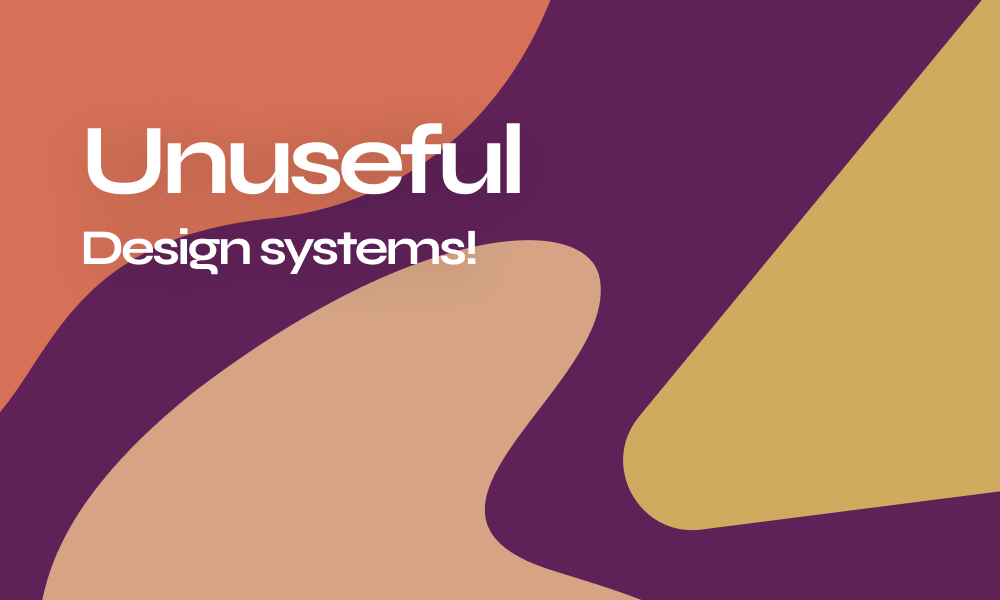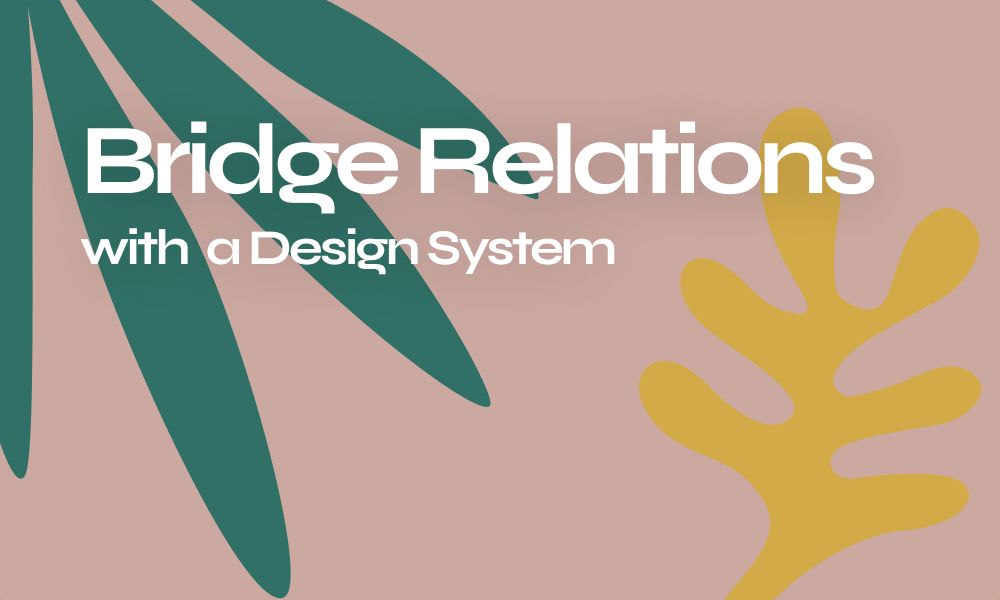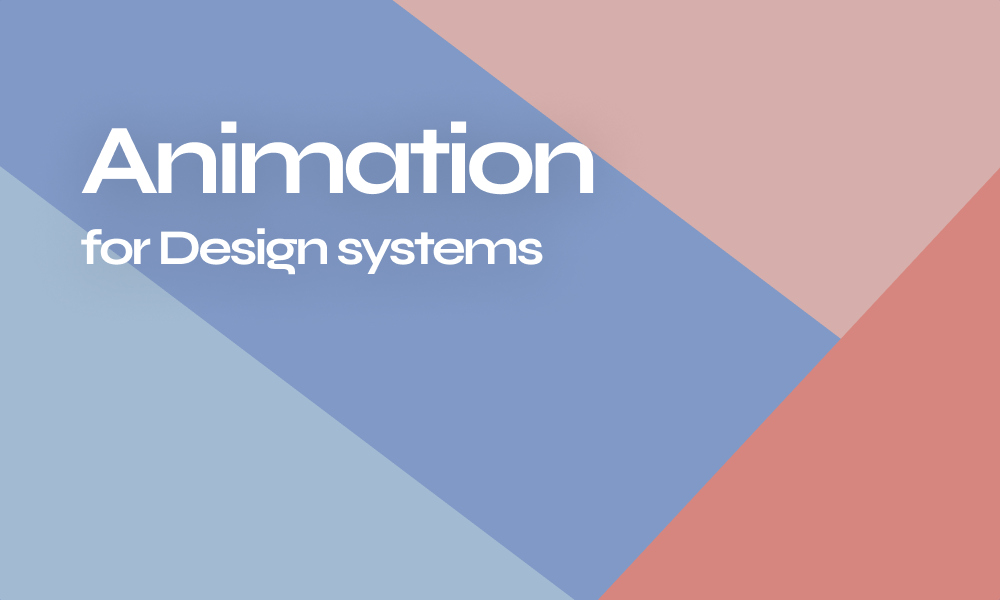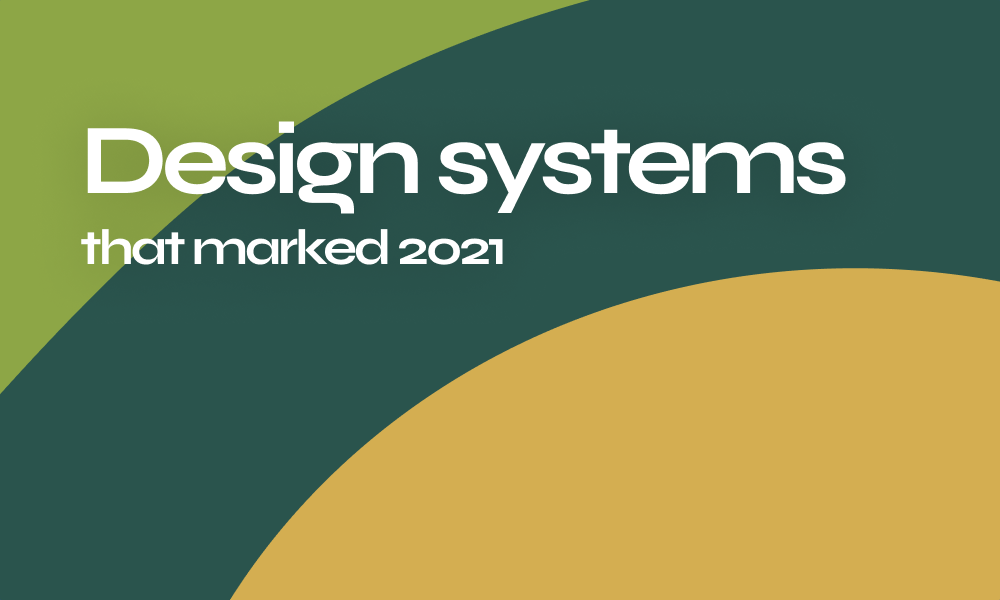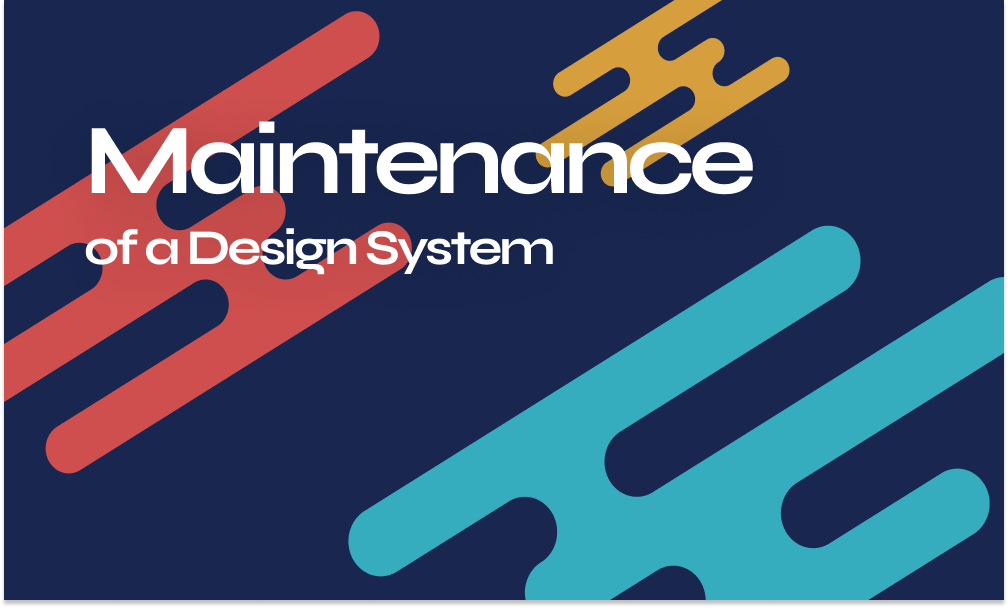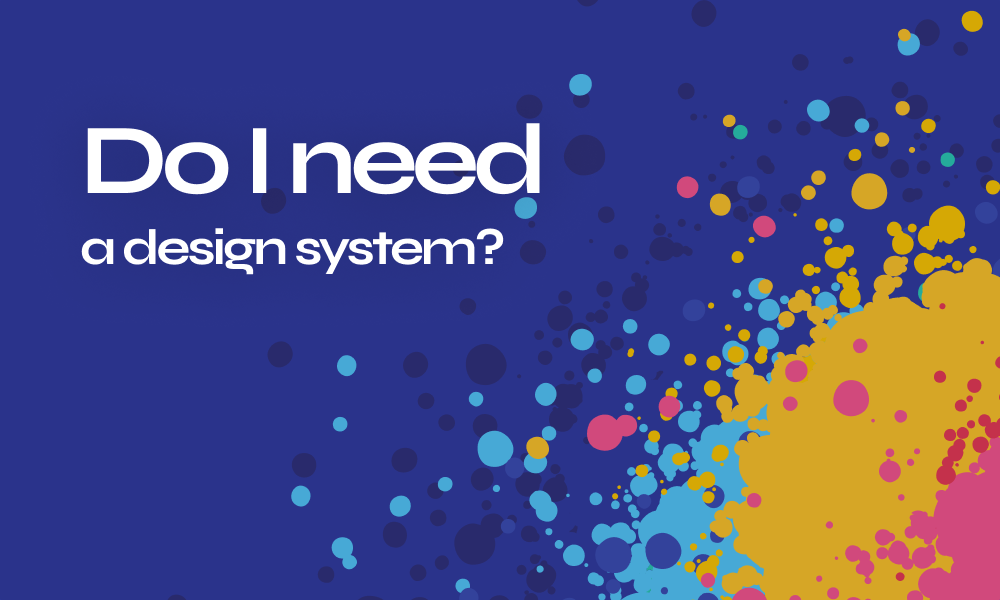

Mastering user experience design is often compared to “climbing stairs” whether it is about an individual designer or a design-based company, user-focused approaches are a gradual learning process that leads to The creation of a mature user experience. Although everyone has a different growth pace, and we can’t deny the human effect on design results, but there is a certain logical path towards UX maturity that everyone undergoes.
So, how to know if your business is UX-driven? And what level of UX maturity have your designs reached? And how can you improve your UX practices?
The UX maturity guide answers it all!
What is UX maturity? How it can be achieved?
The UX maturity model is an implemented chart to help business measure their UX strategy and how successfully they are capable of delivering user-centered designs not only with the present approaches but also with a projection of the future evolutions in tools, cognitive force, and leadership-driven culture.
Factors that affect the UX maturity within an organization
Improving the UX maturity within your design practices is a matter of leveraging certain factors:
The Corporate strategy should lean towards resource optimization successful allocation and proper planning that drives UX’s sense of responsibility and leadership in the team.
The organizational culture should promote and cherish UX-driven practices and work towards building UX careers and implementing UX knowledge.
The Design Process of a company should work more on systemically successful UX design with better research effective guidelines. It is proven that implementing a design system is the best way to shape the design process around UX-driven practices.
Success measuring approaches help better defining where and how you want to move forward with your work.
The 6 stages of the UX Maturity model
The UX maturity model presents the main milestone towards UX growth within an organization by measuring its weaknesses and strengths in delivering a complete user experience.
The model framework presents 6 main stages:
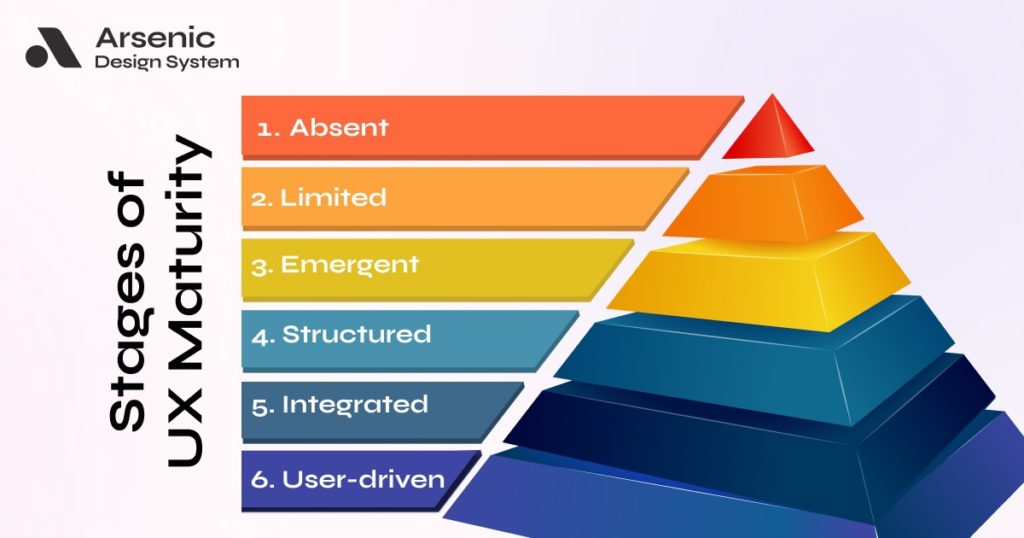
- Absent:
Where your company is acting more around delivering aesthetic User interfaces than work towards delivering actual user experiences. This phase is usually due to the lack of awareness of the importance of UX and limited proper knowledge and guidance.
- Limited:
The few user experience-driven practices are done randomly and unplanned just to meet legal necessities or please a UX-aware leader. Your company is also to be at the limited stage if it is still experimenting with UX in poorly executed practices without official recognition of user experience disciplines in the budget, work roles, and process.
- Emergent:
The UX maturity starts emerging the company executes Functional user experiences that are promising yet lack consistency and efficiency in practices. The company might plan a budget and allocated team members, but its UX efforts are still unstable and often led by a manager that without him nothing gets done.
- Structured:
The UX is structured when the organization is already implementing semi systemic practices and methodologies to create user experiences. All team members are aware and recognize very well the UX value in their work. UX practices are implemented cross-departmentally and even in the corporate strategy.
What lacks is proper synchronization and a unified product lifecycle.
- Integrated:
At this stage, we talk about spontaneous UX practices that are well integrated within a proper workflow with measurable results. The UX work is comprehended and applied by all company members and departments. There can be also attempts of innovation and amelioration. The UX work is qualified effective and serves the aimed business goals
At this point, the company will look into favoring its practices towards providing a great user experience that also creates a mutual benefit for the company.
- User-driven
At this stage, the company is able to deliver purely branded user experiences that are uniquely user-centered with exceptional outcomes. This stage is often related to the fact that the organization had implemented a design system successfully.
Few companies only upgrade to this stage, as it requires some true and consistent dedication to the user experience, and it is really hard to maintain for long durations before new user needs and visions emerge in the market.
Personally, we have been able to reach a powerful UX maturity within our team thanks to Arsenic Design system as one true method to align teamwork and keep the focus on delivering astonishing UIs for perfect UX. It also helped us establish a branded user experience that screams our print from user-focused sketches to iterative design practices. We are now able to stabilize our UX efforts and easily educate new joiners thanks to Arsenic documentation feature.
Conclusion
Judging Your Organization’s UX Maturity before implementing a Design system
Implementing a design system requires a suitable level of UX awareness in order to establish the right component library, but it is easier to grow with it thanks to its detailed guidelines that define the how and what of every product. There are multiple assessment methods to evaluate an organization’s UX maturity by conducting team interviews, detailed process analysis, and client surveys. You can also refer to experts to help you well implement the design system within your process.

